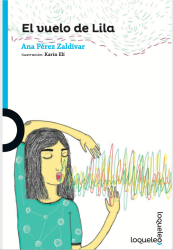Storytelling
"There’s always room for a story that can transport people to another place"
J.K. Rowling
What is storytelling?
Storytelling is an art. Actually, it is an art of showing rather than telling. For hundreds and hundreds of years, storytelling has been the way for cultures to share values, beliefs, wisdom, and illustrate how and why life changes.
Through memories, conflicts, or compelling characters and their context, storytelling creates a narrative. Its ultimate goal is to connect an idea with an emotion that inspires the audience to take action or remember the learning.
- To share your personal or professional story in an impactful way
- To promote or influence, individual or collective behavior through connecting emotion, motivation, and action in a story
- To bring people together by evoking emotions rather than presenting facts and data
- To inspire, motivate, and drive the audience into action
To develop your story, I will guide you to define:
- What do you want to convey?
- Who is your story for? What might they care about? Why is the content relevant for them?
- Where will the audience read/heard/listen to your story?
- What metaphor would you like to use: a character/s, a conflict, a memory…?
- What is its intended result and what is the knowledge-sharing goal?
Storytelling is a kind of magic; one that has inspired me to write children’s books that help build a shared understanding of social issues. With lively characters and imaginative adventures, I explore themes like fairness, healthy habits, and kindness in ways that feel fun and natural.
My stories invite young readers to step outside the “usual” and discover fresh ways of looking at the world through the surprises and lessons hidden in every tale.
I aim to create moments where children truly feel for the characters, laugh with them, cheer them, and learn alongside them. I believe that these little sparks of imagination can inspire positive changes in their lives.
The storyteller in me
My daughter was two months old when we arrived in Guatemala. We did not know anyone, and I was not used to being at home dealing with an adorable but non-stop crying baby. I missed my work, my friends, and my independent life. I wanted to escape. One pitch-dark Sunday evening in Guatemala City I was visiting a local bookstore just around the corner from home. Surrounded by beautiful book covers and stories by unknown authors that seemed to beg for discovery, I was feeling sorry for myself. Waiting my turn to pay, I managed to lift my eyes above the cashier. A small piece of paper on the announcements board seemed as if it had a spotlight on it. It read: “Creative writing course. March 6 from 6-9 pm.” It was the following day. I remember that instant as the “Aha moment” that marked a turning point in my life which reconnected with a childhood passion-storytelling.
Soon after, I joined a writing group called “The stories factory” which provided me the opportunity to publish my first three children’s books and gave me the freedom to choose an informal, humorous, and imaginative style to tell stories and convey educational messages.
My daughter was two months old when we arrived in Guatemala. We did not know anyone, and I was not used to being at home dealing with an adorable but non-stop crying baby. I missed my work, my friends, and my independent life. I wanted to escape. One pitch-dark Sunday evening in Guatemala City I was visiting a local bookstore just around the corner from home. Surrounded by beautiful book covers and stories by unknown authors that seemed to beg for discovery, I was feeling sorry for myself. Waiting my turn to pay, I managed to lift my eyes above the cashier. A small piece of paper on the announcements board seemed as if it had a spotlight on it. It read: “Creative writing course. March 6 from 6-9 pm.” It was the following day. I remember that instant as the “Aha moment” that marked a turning point in my life which reconnected with a childhood passion-storytelling.
Soon after, I joined a writing group called “The stories factory” which provided me the opportunity to publish my first three children’s books and gave me the freedom to choose an informal, humorous, and imaginative style to tell stories and convey educational messages.
10 years and Mexico passed between Guatemala and Sri Lanka. During this period, my storytelling was very quiet overtaken by the technical production of my doctoral studies. It seems that I have now arrived at an oasis where I have the physical and the mental space for my imagination to fly again. Inspired by the surroundings, I am ready to create adventurous characters learning about themselves and the world around them. New and old global concerns, such as climate change and children’s self-esteem are burning in my creative process.



